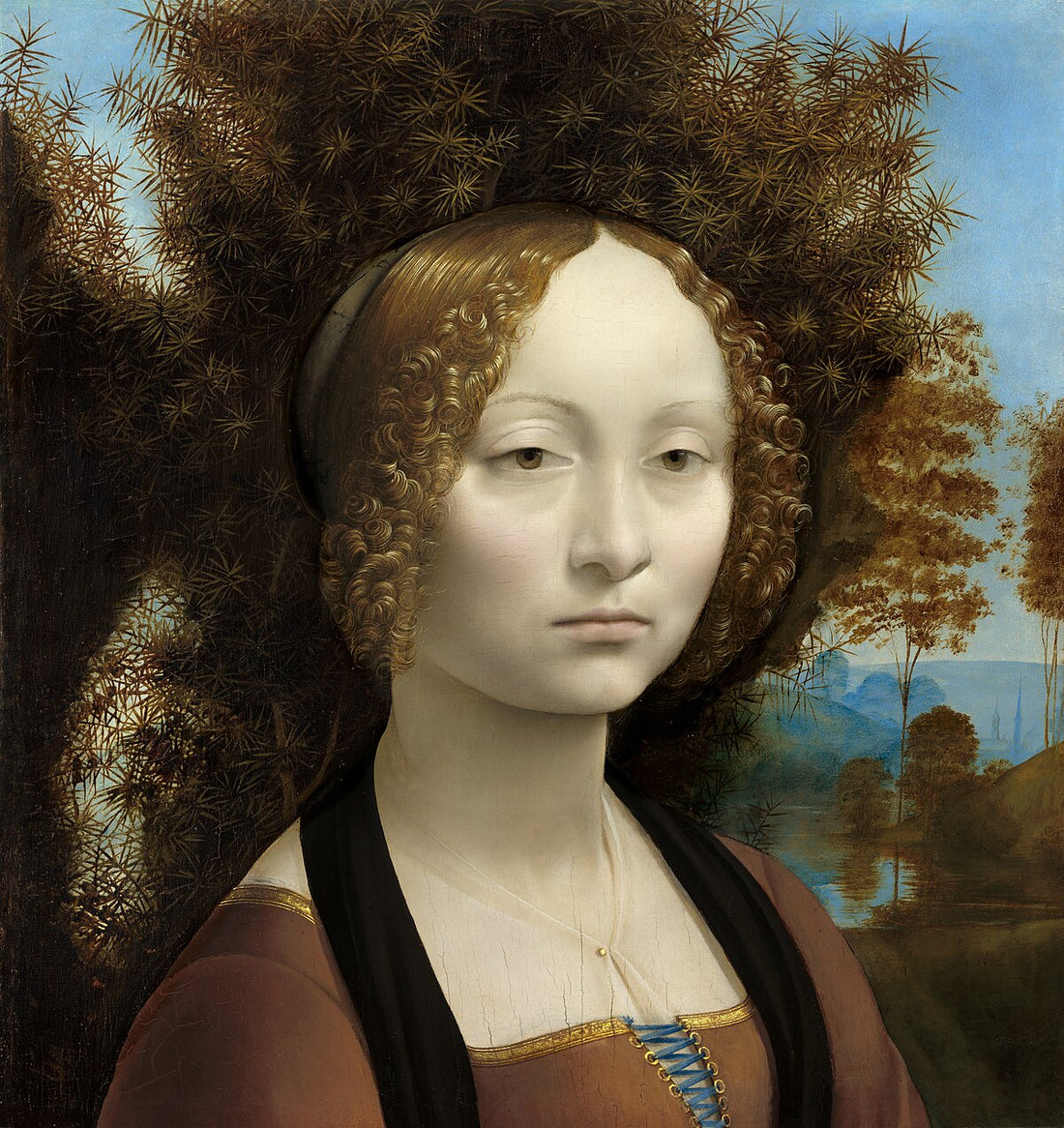
The Virgin of the Rocks (1483-1486): Celebrated for its detailed natural background, featuring rocks, plants, and water.
Renowned as a polymath during the Renaissance, Leonardo da Vinci is widely recognized for his contributions to art, science and engineering. Yet what often remains in the shadows is his connection with the olive tree, a symbol of peace and wisdom that carries a significance throughout history. Da Vinci's deep appreciation toward the perfection of mother nature frequently inspired him to infuse elements of the natural world into his works. And the olive tree was no exception.

Leonardo da Vinci’s hometown of Vinci, enriched by olive groves, underscores his lifelong affinity with the olive tree’s enduring symbolism in his art and inventions.
symbolism in art
Leonardo's observations of the natural world were not merely scientific. The enduring qualities and symbolic representations of peace embodied by the olive tree undoubtedly played a role in influencing his artwork. While direct references to this symbol may be subtly woven into his paintings, the synonymous link of the olive tree with resilience and growth resonates with the underlying themes in his works. Within the intricacies of his creations, every detail carries meaning. The inclusion of an olive tree or its branch evokes notions of peace and humanism that were intrinsic to the Renaissance era.

Annunciation (c. 1472-1475): llustrating Leonardo’s attention to botanical accuracy and his desire to imbue his paintings with naturalistic and symbolic elements.
utilization of olive wood in inventions
In addition to its symbolic significance, Leonardo's fascination with the olive tree extended into more practical applications. Da Vinci was renowned for his inventive genius and likely used olive wood in his artworks due to its durability and aesthetic appeal. A more specific example would have been when designing his innovative flying machine models. The strength and flexibility of the material would have been perfect for creating the lightweight yet robust frames needed for his aeronautical experiments. Whether crafting models, tools or canvas frames, olive wood would have been an accessible and versatile material in Leonardo’s workshop. Aside from its physical attributes, the choice of olive wood also signifies Da Vinci’s respect and love for the trees. Blending nature's wisdom into his creations.

Flying machine models of Leonardo da Vinci’s scientific studies displayed at the Science and Technology Museum.
a deep bond with nature
Leonardo's notebooks are filled with sketches and observations that showcase his connection to the land and its resources. His botanical interests and detailed studies of plants indicate a true admiration for nature that extended to the olive tree. This admiration, paired with his avid curiosity, would have prompted him to delve not only the tree's visual and symbolic aspects, but also into its practical uses. From utilizing olive oil in lamps to exploring its medicinal properties.

Codex Arundel: This collection of papers includes studies on a variety of subjects, among them botanical observations and diagrams that show Leonardo’s interest in the structure and growth patterns of trees.

Ginevra de’ Benci (c. 1474-1478): This connection between the natural element of the juniper bush and the subject’s character traits is a testament to Leonardo’s practice of integrating nature into his art to convey deeper meanings.
a lasting influence
The association between Leonardo da Vinci and the olive tree embodies the Renaissance spirit of exploration and reverence. For the unity of art, of nature and of science. Just as the olive branch has been a symbol of peace and wisdom throughout history, da Vinci’s influence continues to motivate us to connect with nature and the world around us.

At Zimms Organics we recognize the significance of the olive tree not just in history but also as a symbol of sustainability and balance. Da Vinci’s holistic perspective of blending art and nature reflects our core belief in caring for the land and appreciating its blessings. While we nurture our groves, we carry forward this spirit of curiosity and reverence for nature that defined Leonardo. We invite you to experience the history and enduring values embodied in each bottle of our olive oil.
As we face today's challenges and innovations, let's take inspiration from Leonardo da Vinci's admiration for the olive tree and let it guide us toward a future where creativity, sustainability and harmony thrive side by side.

